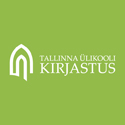Sõda ja kultuuriline pööre [War and cultural turn]
Abstract
The primary argument of this article is that the Estonian “cultural turn” to modernity was already occurring prior to World War I, which had the effect of sharpening its contours and intensifying viewpoints. A complex, many-faceted conjunction of changes, the cultural turn was articulated and carried by the Young Estonia movement of writers and intellectuals, whose birth years clustered around the years 1883 and 1889. Around 1905, Young Estonia’s clarion call for “more culture, more European culture” was issued by poet Gustav Suits in a context of accelerating social changes, including widespread urbanization, and a shift of orientation from German to French and Finnish cultural models. Young Estonia, which explicitly stressed the value of “the young”, issued a protest against limited notions of folk culture, and – as also argued in this article – opened the horizons for more probing public engagement with connections between culture and nation. Young Estonia’s infl uence included a critical problematic around the renewal of the Estonian language, as well as an emphasis on the aesthetics of the book. Particular emphasis is placed in this article on the analysis of the corpus of texts in the short-lived publication Vaba Sõna (The Free Word,1914–1916), where there was intense discussion of culture and nationalism, and where one of the most important fi gures was historian Hans Kruus; these exchanges were one of the preparatory factors for moving the question of autonomy into the centre of Estonian politics. As distinct from the welter of meanings att ached in recent years to the umbrella term “cultural turn”, to the point where the term 75 means all and nothing, this article redefi nes the term as a new quality in culture, a discursive change that results from the summation of a series of innovations; in Estonia this process culminated in the years between Young Estonia’s maturity and 1917. While the consequences of World War I for European culture have been analyzed in terms of destruction, catastrophe, and catharsis, the Estonian case does not fit this pattern; for various reasons the impact of the war was more diffuse, and was the fi rst of a chain reaction of events: the Russian Revolution of 1917, the declaration of the Estonian independence in 1918, and the War of Independence 1918–1920. In retrospect, and in relation to the events that followed it the First World War was a “forgotten war”, despite the fact that up to 100 000 Estonian men were mobilized into the Russian Army (7% of the adult male population), of whom about 10 000 fell or were lost. Paradoxically, the combination of war censorship, which muted Baltic German communication channels, and overt anti-German propaganda led the way for new currents of opinion in a more open Estonian public space. Another crucial factor in this process was journalism, which had a large impact on the acceleration and range of communication, the spread of reading and writing practices and overall cultural literacy: front-line reporting and soldiers’ letters published in newspapers contributed to a growing knowledge of geography beyond the local ken. The article concludes with the view that the First World War did not significantly impede the cultural turn (the core of Young Estonia survived the war), but sharpened the positions taken on various issues of burning interest. During the cultural turn – and as a result of it – a paradigm shift took place in Estonia: an agrarian society where most communication was oral was replaced by a modern society founded on the written word.
Keywords
World War I, Young Estonia, “The Free Word”, culture, nationalism
Full Text:
PDFRefbacks
- There are currently no refbacks.
Published by / Kirjastaja:

ISSN 2504-6616 (print/trükis)
ISSN 2504-6624 (online/võrguväljaanne)
